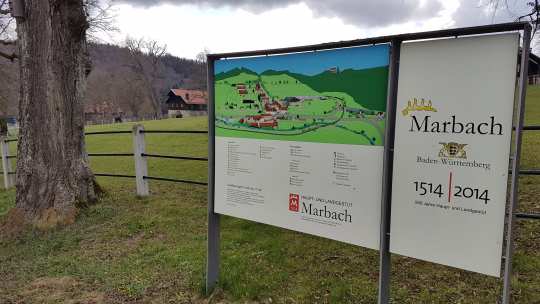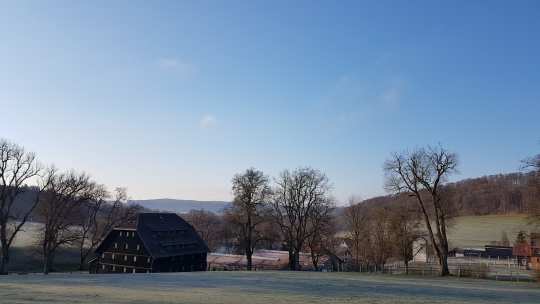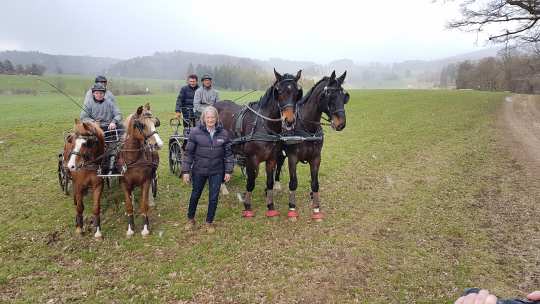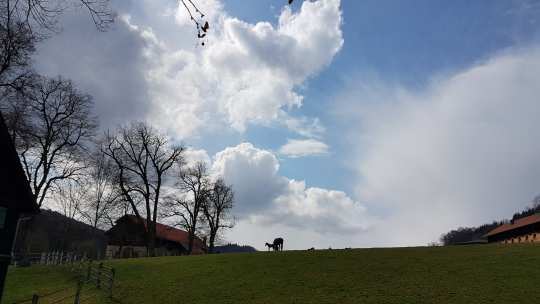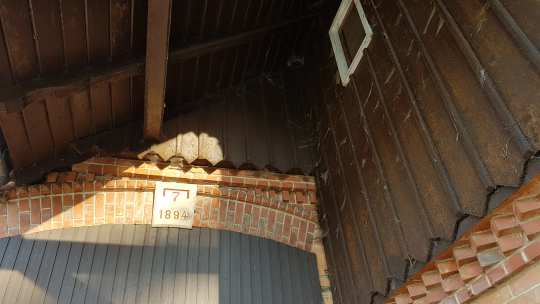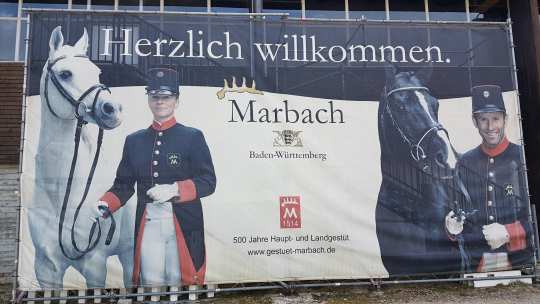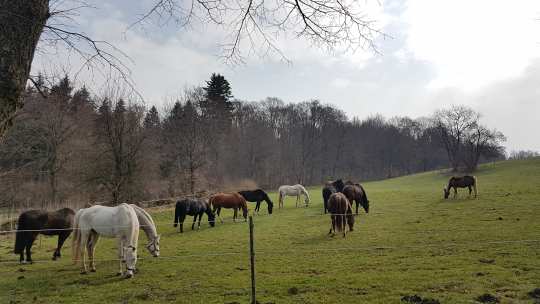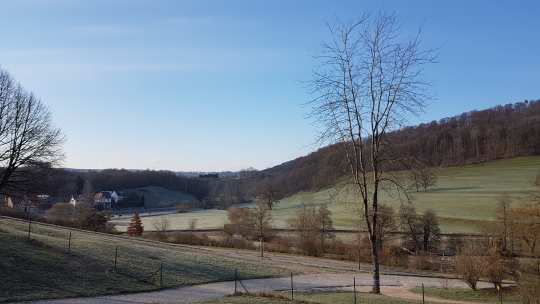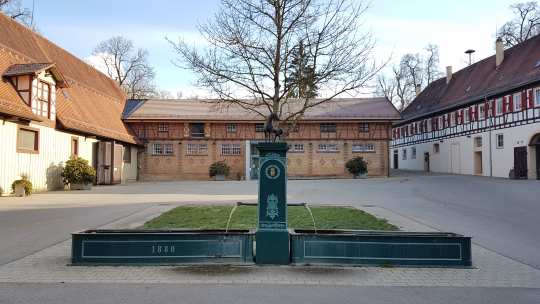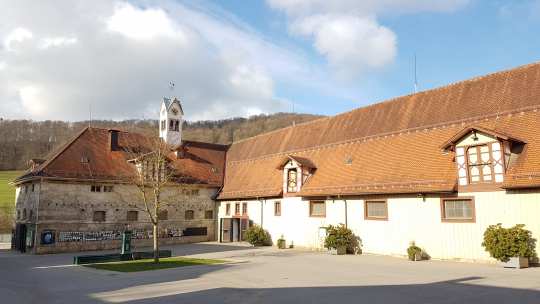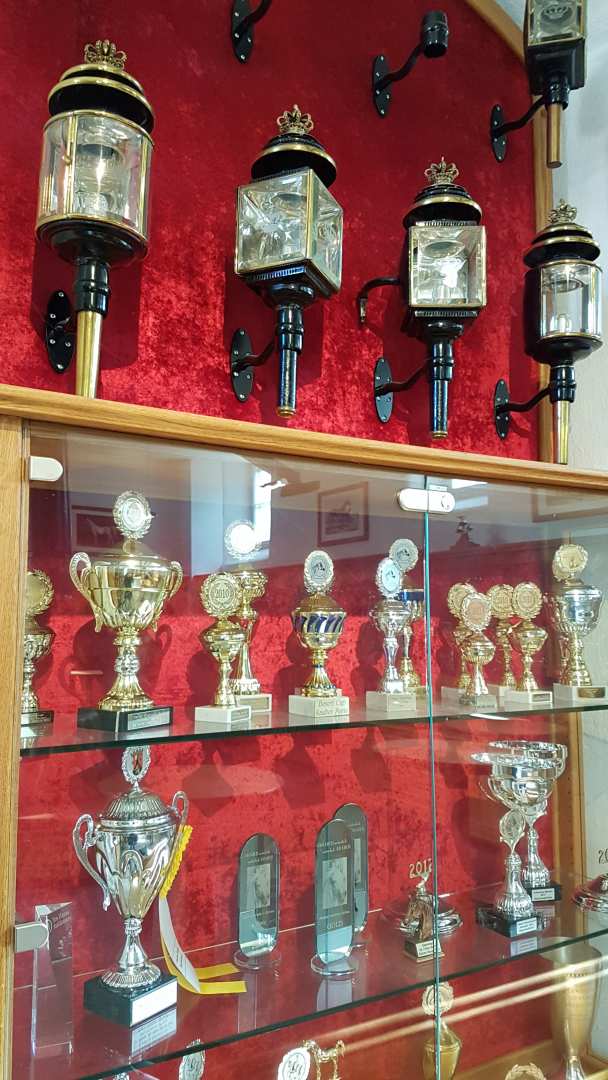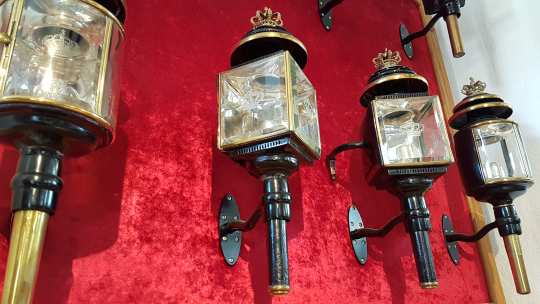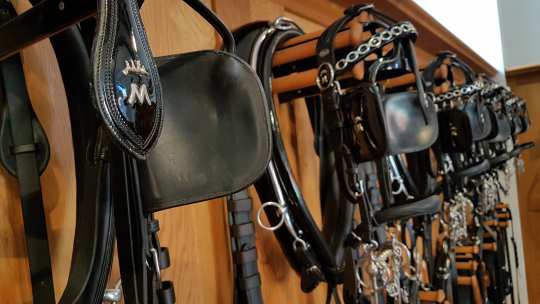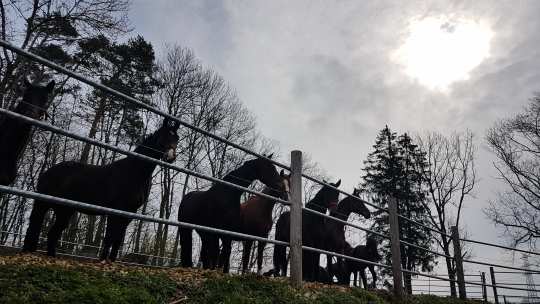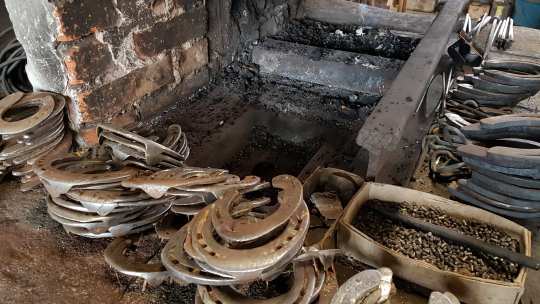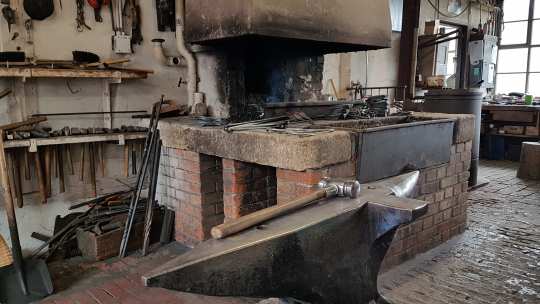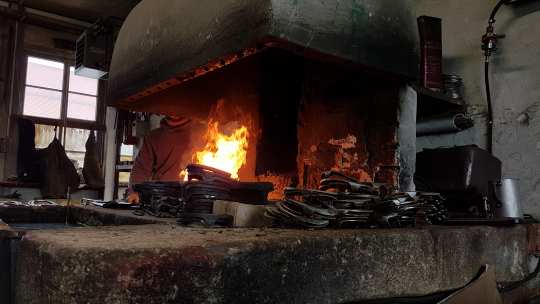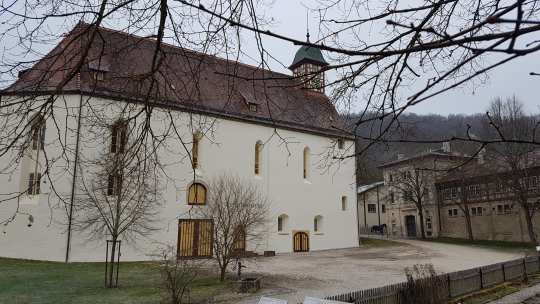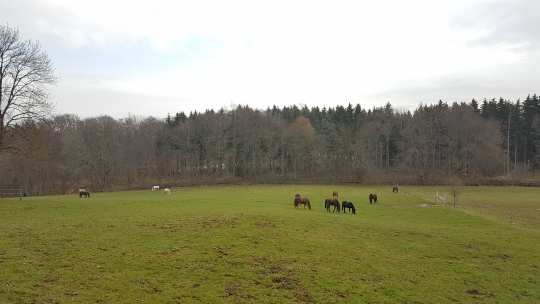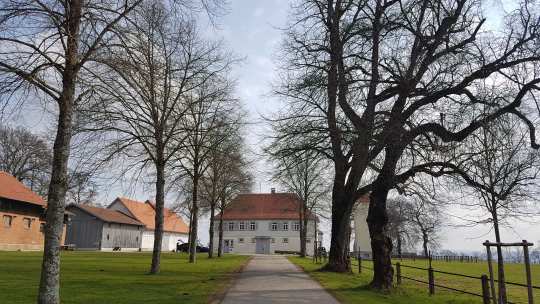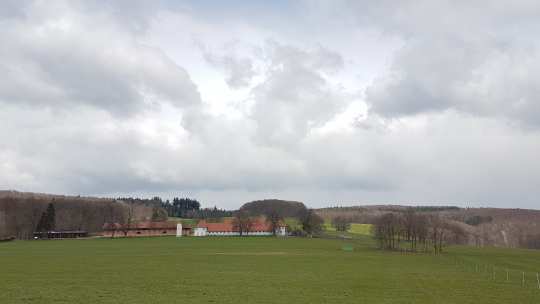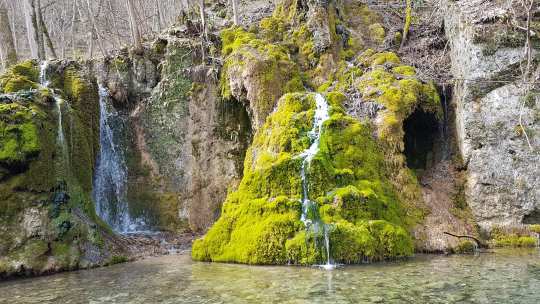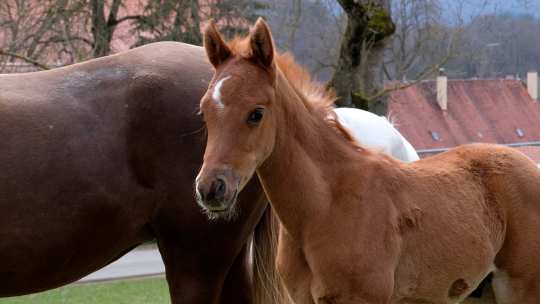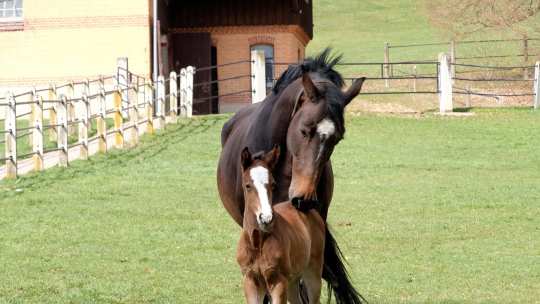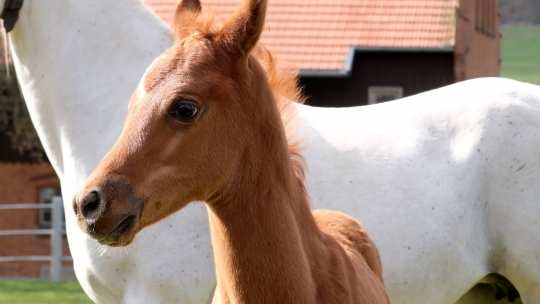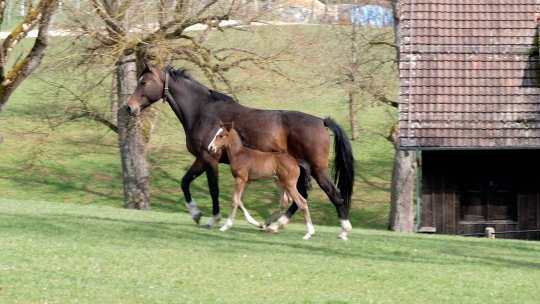02.06.2021
On the trail of 500 years of horse breeding
“He is my absolute best horse,” said Olympic gold medallist, Michael Jung, about La Biosthetique Sam, his beloved horse, with whom he also won in Aachen in 2011. Sam and Jung’s second top horse, fischerRocana, have one thing in common: They both grew up at the Marbach Main and State Stud in Baden-Württemberg. That is reason enough in itself to take a look behind the scenes of the oldest and largest state-run stud in Germany.
10 degrees and cloudy – according to the weather forecast. Could be better, but at least no rain is predicted. So, I packed sneakers rather than winter shoes, after all it is spring. The destination is the small district of Gomadingen in south Baden-Württemberg. Just after turning off the motorway, I noticed that spring was slightly different here compared to in Aachen. Outdoor temperature one degree and snow – but at least the white mountains look pretty. The road winds around narrow rural roads and passes through peacefully dozing villages. It is hard to believe that over half a million people visit this idyllic place every year. With events like the Marbach Classics, the Stallion Parade and stud auctions as well as international eventing, the Marbach Main and State Stud is one of the largest tourist attractions of the region.
Annica lends a hand, sugar-sweet foals and Anja Mertens in the NetAachen Web-Call
But Marbach is not only well-known for its events, but first and foremost for its horse breeding, which is steeped in centuries of tradition: In 2014, the stud celebrated its 500th anniversary. “Main and State Studs are old establishments, which served to provide the state with good horses in the past. They were primarily implemented for military or agricultural purposes,” explained State Head Equerry, Dr. Astrid von Velsen-Zerweck. That is no longer the case today, but good horses are nevertheless still required. “We are also responsible for breeding horses for the state today. A Main Stud keeps mares, a State Stud keeps stallions – we have both.” Horses are predominantly bred for the sport; whereby good horses are also elementary here.
- 01
- 02
- 03
- 04
- 05
- 06
- 07
- 08
- 09
- 10
- 11
- 12
- 13
- 14
- 15
- 16
- 17
- 18
- 19
- 20
- 21
- 22
- 23
23
Out of love for the horse
One recognises the long history of Marbach at the first glance: 180 buildings were already built on the eight farms of the stud in the 16th Century and are still listed buildings today. When one enters the old farrier’s workshop or the stallion station of the former monastery grounds, one has the feeling that time has stood still. It is like a journey into the past.
The buildings are one thing that stick to mind. The people are the other. Over 80 employees take care of the welfare of the almost 600 horses on a day-to-day basis. Some of them have been working there for decades. Why? Out of love for the horse. “I have always loved horses. It is simply fun watching them grow up and spending time with them every day,” recounted Thomas Schick, Master of Equine Management and Service Facility Manager at Vorwerk Fohlenhof & Güterstein. He goes about his job passionately – and at the same time carries a lot of responsibility. “It is our job to uphold over 500 years of unbroken tradition and preserve particularly historical horse breeds such as the Alt Württemberg,” Dr. Astrid von Velsen-Zerweck emphasised. “To make sure this succeeds, we also train people.” The State Riding and Driving School is located at the Main and State Stud, every year just under 50 apprentices commence their training as a groom. As such, Marbach is the largest training institute in Germany for this profession. Conveying how to keep and handle horses in a species-appropriate manner is a matter close to the Marbach stud’s heart.
- 01
- 02
- 03
- 04
04
From a foal to a top athlete
And among other things this also entails ensuring that the four-legged animals get plenty of exercise: Every morning the Stud Master in charge of the mares, Klaus Niedhammer, pushes the gate to the side. The Arab mares and their foals immediately become attentive, stop eating and prick their ears forward. Still quite timidly one of the foals takes a peek outside the large pen. Another one is more courageous, trots out onto the field confidently and bucks with joy. The remaining mares with their foals at foot follow one after the other. A few minutes later the entire herd is grazing peacefully on the meadow.
Images like these are part of everyday life at the Main and State Stud. Whether for the brood mares, young horses or oldies – spanning 963 hectares in total, the stud has plenty of room to allow for sufficient exercise. One can see that the horses are satisfied, good-tempered and approachable. “Our horses are very attached to people,” Thomas Schick explained. “We go to a lot of effort in the early years which we profit from later on.” The goal: The cute, lively foals are to develop into successful athletes one day. The recipe of the team in Marbach seems to pay off, their list of successful horses is namely very long. Some of them are even among the best and have made it right up to the CHIO Aachen – like La Biosthetique Sam and fischerRocana for example.
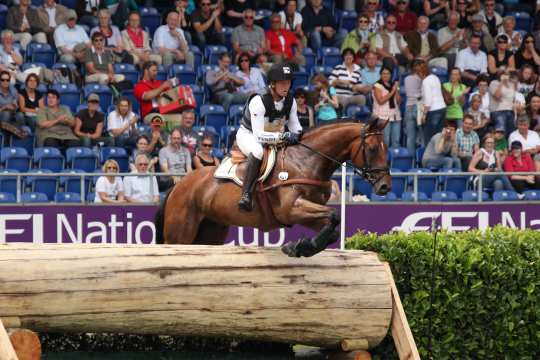
Michael Jung and La Biosthetique Sam at the CHIO Aachen 2011.
We’ll see you at the CHIO Aachen!
After two cold days in the Swabian Alb, it was time to head back to Aachen. The hustle and bustle of the big city was extremely noticeable all of a sudden, the rural environment evidently has a decelerating effect. The clocks obviously tick slower in Marbach. But perhaps that is a good thing, the success of the Marbach team speaks for itself. So, let’s take a closer look at the starting lists at the CHIO Aachen in September, then we’ll perhaps discover another four-legged athlete with roots in Marbach. It wouldn’t be surprising.






